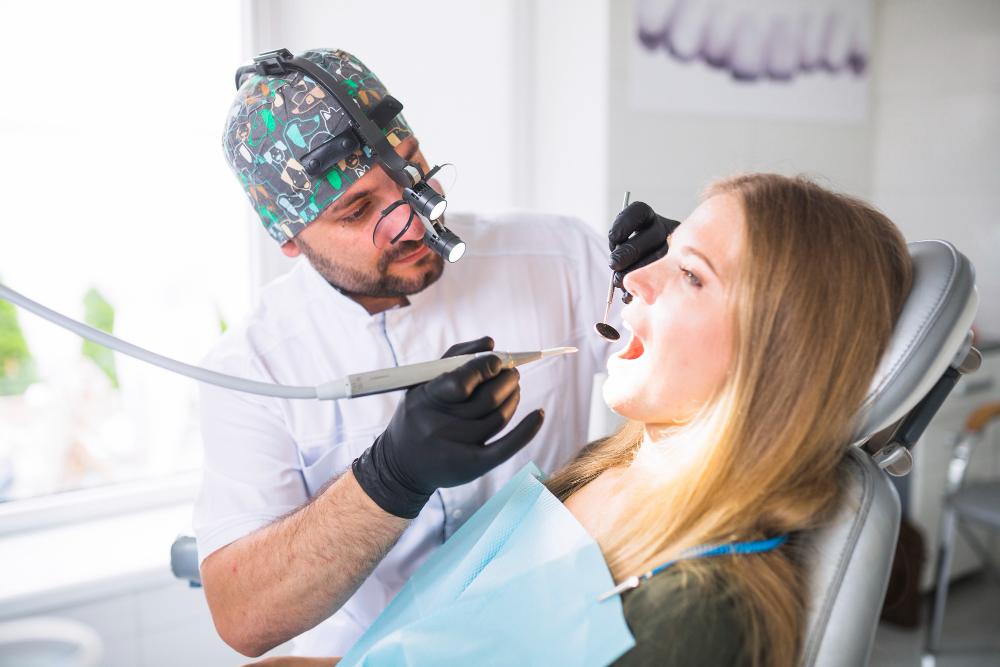Introduction:
Good dental hygiene is crucial for maintaining good oral health, but with so much conflicting information out there, it can be difficult to know what to believe. Many people have heard a variety of myths and misconceptions about dental health over the years, some of which can actually be detrimental to our oral health. In this blog, we will look at some of the most common myths about dental health and provide fact-checking information to help you better understand how to care for your teeth and gums.
Myth 1: The only thing that causes cavities is sugar.
Reality:
While it’s true that sugary foods and drinks can increase the risk of cavities, they’re not the only culprit. Cavities happen when acid breaks down the enamel on your teeth and creates holes in your teeth. The acid is produced by bacteria that live in plaque. High-carb foods that stick to your teeth, such as bread, crackers, and chips can also contribute to the development of cavities. Additionally, acidic foods and drinks like citrus fruits, coffee and carbonated drinks can erode the enamel on your teeth, which can increase the likelihood of cavities. To reduce your risk of cavities, brush your teeth twice a day with fluoride toothpaste, floss at least once a day, and see your dentist regularly for cleanings.
Myth #2: Brushing your teeth harder will make them cleaner.
Reality:
Too much pressure when brushing your teeth can potentially be detrimental. Brushing too hard can wear away the enamel on your teeth and damage the gum tissue, which can lead to sensitivity and increase the risk of gum disease. The American Dental Association recommends that you brush your teeth twice a day using a soft-bristled brush and gentle circular motions. Be sure to brush for at least two minutes each time to give the fluoride toothpaste enough time to do its job.
Myth #3: Gum disease only affects your teeth.
Reality:
Gum disease is a serious condition that can affect your entire mouth, including your gums, teeth, jawbone, and other supporting tissues.Gum disease can result in tooth loss, bone loss, and even systemic health issues like diabetes and heart disease if it is not treated. To prevent gum disease, brush and floss regularly and see your dentist at least twice a year for cleanings and checkups.

Myth #4: You only need to floss if you have food stuck in your teeth.
Reality:
Flossing is an important part of a good dental hygiene routine, even if you don’t have visible food stuck in your teeth. Flossing removes plaque and debris from between your teeth and along your gum line, where your toothbrush can’t reach. Gum disease and cavities may be avoided as a result. Make sure to floss at least once a day, preferably before brushing your teeth at night for the best results.
Myth #5: Whitening toothpastes can whiten your teeth.
Reality:
Whitening toothpastes contain abrasives that can remove surface stains from your teeth, but they don’t actually change the color of your teeth. For more dramatic and long-lasting results, you may want to consider professional teeth whitening treatments from your dentist. Keep in mind that some whitening treatments can cause sensitivity, so it’s important to talk to your dentist before starting any new treatments.
Myth #6: Braces are only for kids.
Reality:
Braces aren’t just for kids – adults can also benefit from orthodontic treatment to improve their oral health and appearance. In fact, many adults are getting braces or clear aligners because they want straighter teeth or a more confident smile. Braces can also improve bite issues, which can lead to better oral health and overall health.
Myth #7: After eating, you should brush your teeth right away.
Reality:
Brushing your teeth immediately after eating can actually damage your enamel. When you eat, the bacteria in your mouth produce acid that can weaken your enamel. Brushing your teeth right after eating can rub the acid into your enamel, causing erosion. Instead, put off brushing your teeth for at least 30 minutes after eating. In the meantime, you can rinse your mouth with water or chew sugar-free gum to help clean your teeth.
Myth #8: Only sweet drinks like soda cause cavities.
Reality:
While sugary drinks like soda can definitely contribute to the formation of cavities, other drinks like fruit juice, sports drinks, and even coffee or tea with added sugar can also be culprits. Additionally, acidic drinks like citrus juices or energy drinks can weaken tooth enamel and make teeth more susceptible to decay.
Myth #9: Fluoride is dangerous and should be avoided.
Reality:
Mineral fluoride can improve tooth enamel and help prevent cavities.While excessive amounts of fluoride can cause dental fluorosis, a condition that affects the appearance of teeth, the optimal amount of fluoride in drinking water and toothpaste is considered safe and effective for preventing cavities. In fact, many dental professionals recommend fluoride treatments for children and adults who are concerned about their oral health. If you have any concerns about fluoride, talk to your dentist.

Myth #10: If you don’t have any problems with your teeth, you don’t need to see a dentist.
Reality:
Even if you don’t have any dental issues or pain, it’s still important to see a dentist regularly. Regular dental checkups and cleanings can help prevent problems from developing in the first place. Your dentist can also identify and treat any potential issues before they become more serious, saving you time, money, and potential pain in the long run.
conclusion:
It’s important to be aware of dental myths and misconceptions so that you can make informed choices about your dental health. Make sure to brush and floss regularly, see your dentist for regular checkups and cleanings, and don’t be afraid to ask questions and seek out information when it comes to your oral health. You can have a healthy, attractive smile for many years to come if you take the proper precautions and care for it.


